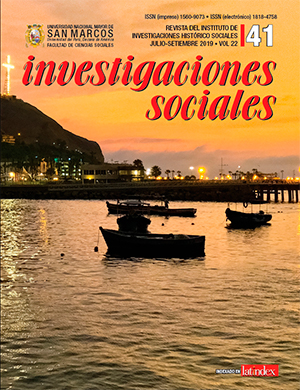Incidence of non comunicable diseases in the elderly people from Callao region
DOI:
https://doi.org/10.15381/is.v22i41.16768Keywords:
Non-communicable diseases, transmissible diseases, adult greater, demographic transition, epidemiological transition, morbidity, quality of lifeAbstract
The aim objective of this research is to examine the incidence of non-communicable or non-contagious diseases and to identify the main illnesses ailments that affect the health and quality of life for the elderly population who live in the Callao region, in order to know the changes that have occurred in the pattern of causes of morbidity, passing from infectious or transmissible diseases to non-infectious or non-communicable others. Due to this, a validated and reliable data collection instrument was designed, which was applied to 202 subjects that are part of the representative sample of people older than 60 years or older, between men and women. The survey, which consists of 25 questions, is a structured, generic and direct questionnaire, and the results obtained will be disclosed. This research concludes that the demographic and epidemiological transitions have made changes in fertility, mortality and the pattern of illnesses, predominating non-communicable ones.
Downloads
Published
Issue
Section
License
Copyright (c) 2019 María del Carmen More Altuna

This work is licensed under a Creative Commons Attribution-NonCommercial-ShareAlike 4.0 International License.
AUTHORS RETAIN THEIR RIGHTS:
a. Authors retain their trade mark rights and patent, and also on any process or procedure described in the article.
b. Authors retain their right to share, copy, distribute, perform and publicly communicate their article (eg, to place their article in an institutional repository or publish it in a book), with an acknowledgment of its initial publication in Investigaciones Sociales.
c. Authors retain theirs right to make a subsequent publication of their work, to use the article or any part thereof (eg a compilation of his papers, lecture notes, thesis, or a book), always indicating the source of publication (the originator of the work, journal, volume, number and date).













